You’re All Just Lucky I Don’t Have a Kodak Carousel
Man, what a trip.
You know any table where China Mieville sits at one elbow and Scott Westerfeld at the other is gonna give rise to some interesting dinnertime conversation. That kind of mix-and-match happened pretty much every night in Nantes: We bonded with China over a mutual love of cephalopods; with Brandon and Emily over the flaws in Batman Begins and the herding of writing workshops; with Scott and Justine over the pleasures of crossing between the USA and the civilised world. (Caitlin and Justine also bonded along a number of other facets that I don’t think the rest of us were privy to.) Heard some pleasant and unpleasant stuff about various musical and literary icons. Hung out with the spectacular Bénédicte Lombardo (whom I have mentioned before); with the black-belt translator Gilles Goullet (who won this year’s Grand Prix de L’Imaginaire for his heroic translation of Blindsight); and was booked solid with interviews set up by one Estelle Revelant, Fleuve Noir’s publicist, who got me more exposure in three days than Tor did over a decade. One morning I left Caitlin alone for two minutes to go back and retrieve my jacket from the restaurant; and by the time I got back upstairs she was making a museum date with Larry Niven (whom she had never even met before).
It was that kind of a week. Never have I been so profoundly overshadowed by so many Big Names, so profoundly ill-equipped to speak the local language, and yet made to feel so completely at home. The panels were admittedly a bit odd (what do I have to say about “Communitisation”? I don’t even know what that is), but there was instantaneous translation for all parties. I didn’t even feel any jetlag.
But the climax event? The very heart and steampunky soul of Nantes?
We are talking a mahogany squid with articulated tentacles and rippling Venetian-blind fins. We are talking sea monsters that seat six, a caged biplane that rises into gusts of snow and cloud; a pedal-powered deep-sea anglerfish, studded with photophores and flapping fins, piloted from the mouth (and if I can work out the bugs, I might upload my very first video of said contraption further down in this entry). We are talking an Oliphaunt twelve meters high that can carry fifty passengers around town. It was a miserable blustery day when we visited the Isle (actually, it was miserable and blustery every day we were there, except for the morning we left), so the elephant wasn’t taking riders. Everything else was, though; each of these artefacts — and more besides — move along lengths of track. They are the ultimate toy train set, and are to be integrated into a massive carousel that’s scheduled to go live sometime in 2016.
I’m gonna try and get back there by then.

Outside the factory floor. I think this is ultimately going to be some kind of steampunky tree or something.
And here is a clickable link to an Mpeg of the Anglerfish in action, which you all damn well better appreciate because it took way too fucking long to coax the server into accepting it:
Penultimately, a smattering of some other local color, which — even though constructed in obeisance to an imaginary friend, still impresses the hell out of me. Nantes Cathedral:
This edifice was built over four and a half centuries, starting in the fourteen hundreds. It wasn’t completed until 1891. Kinda puts a new light on the whole short-sighted-species line, don’t it?
I find this both amazing and disheartening. How can we be capable of such feats even with medieval technology, and yet so utterly unable to grasp consequences that await us in mere decades? How can the same mindset that built this also be responsible for the wholesale rejection of facts ranging from evolution to climate change? Why can’t we harness this kind of strength for good instead of evil?
It’s too damn depressing. I need a cookie. Fortunately, Nantes makes those too — in this very building, among others:
Now that‘s architecture harnessed for the sake of Good.
Took me all damn morning to post this. You can see why I had to go on hiatus.
SFContario tonight. I guess I’ll be seeing some of you there.

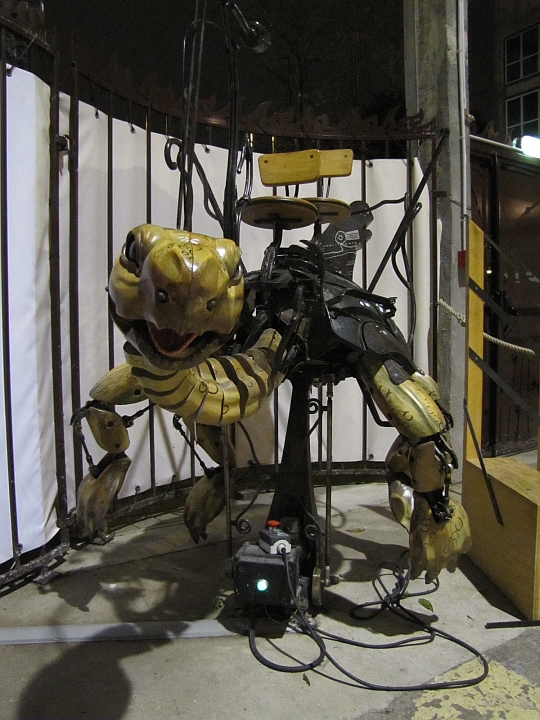
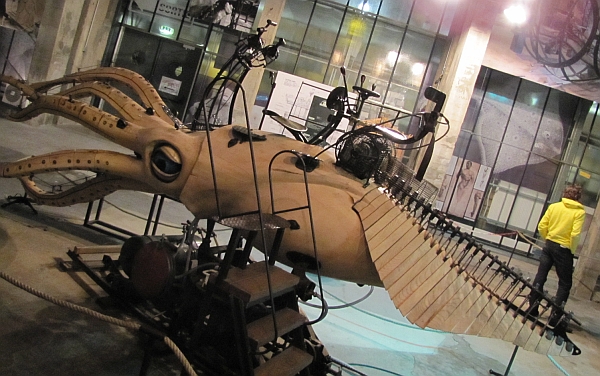
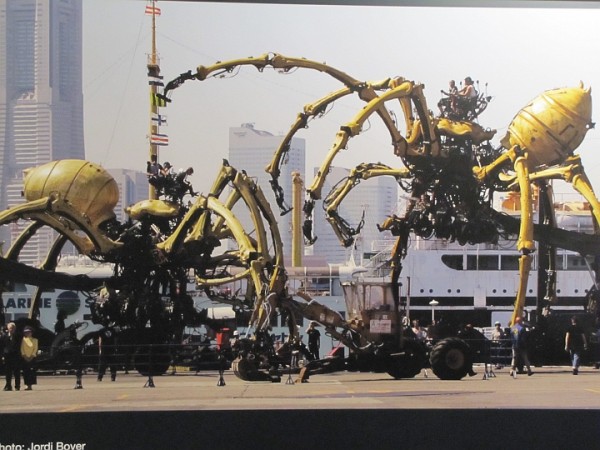
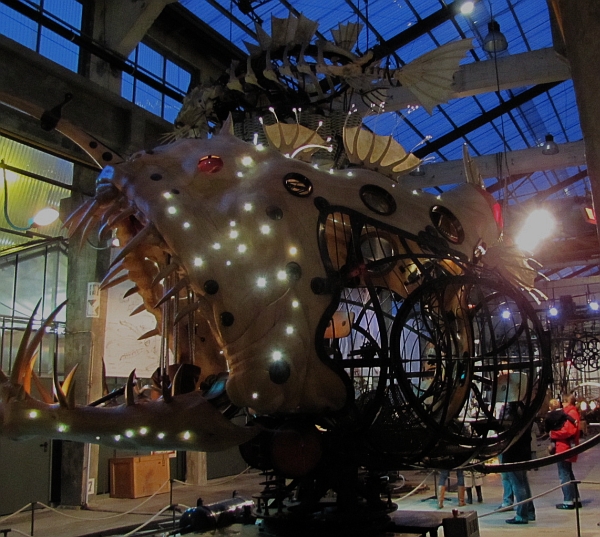


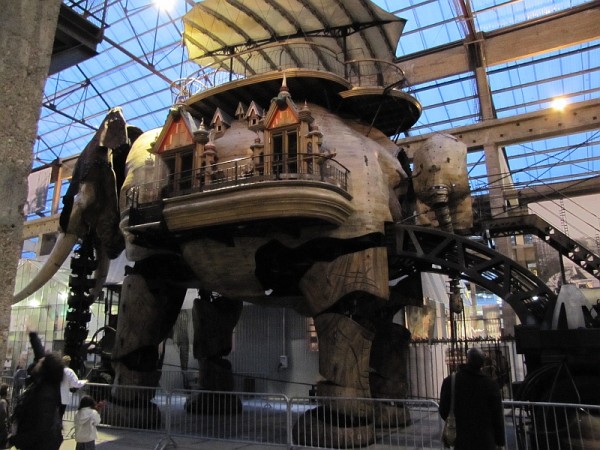
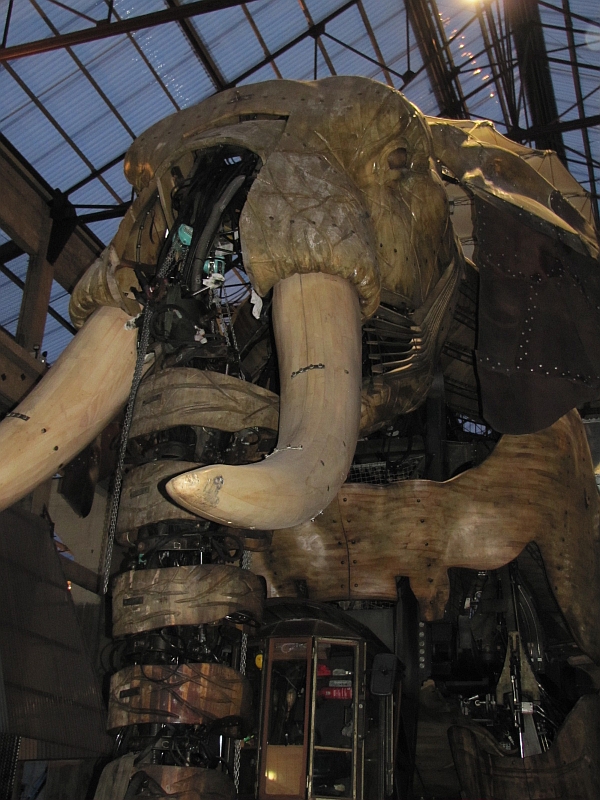
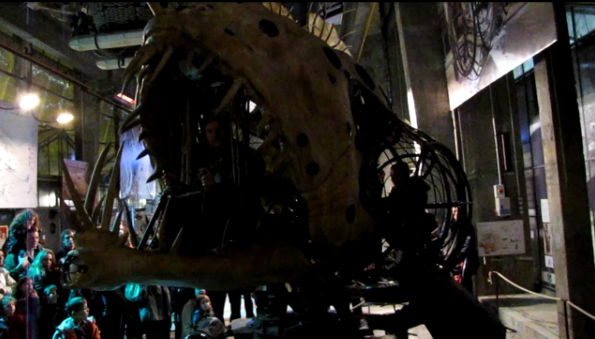
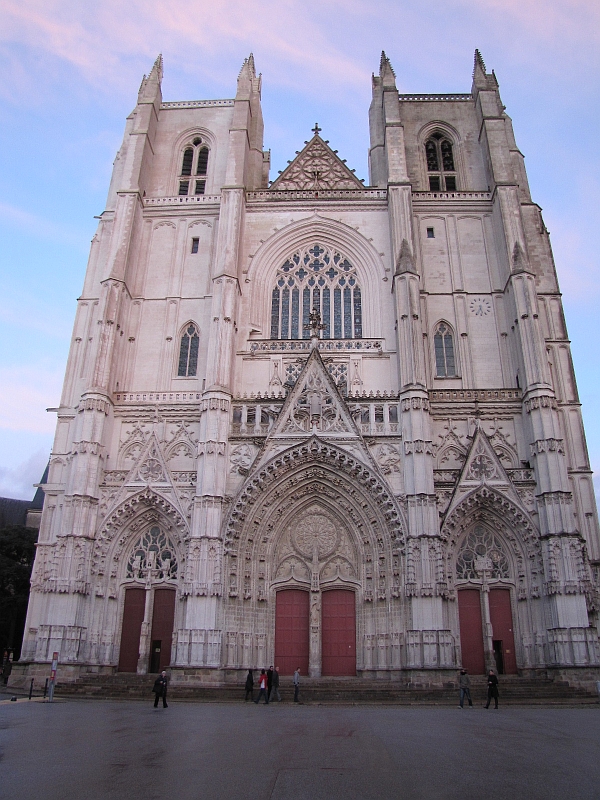
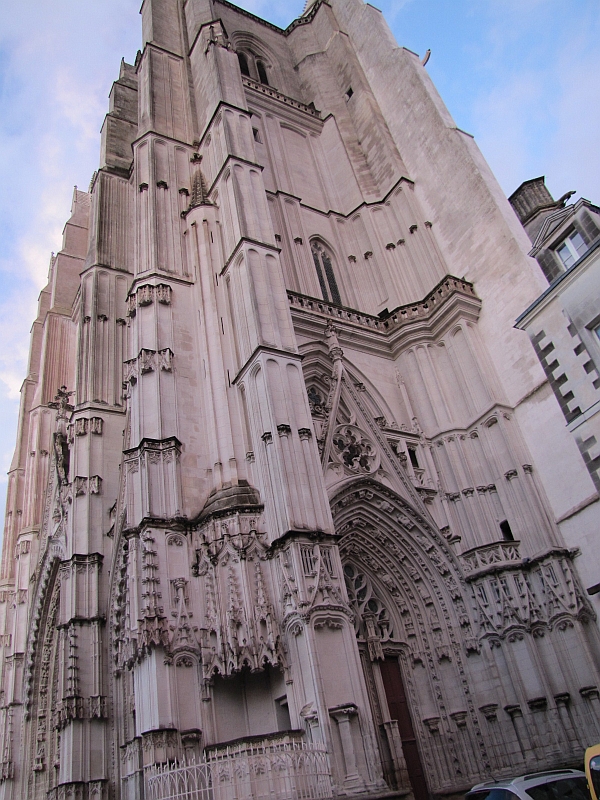
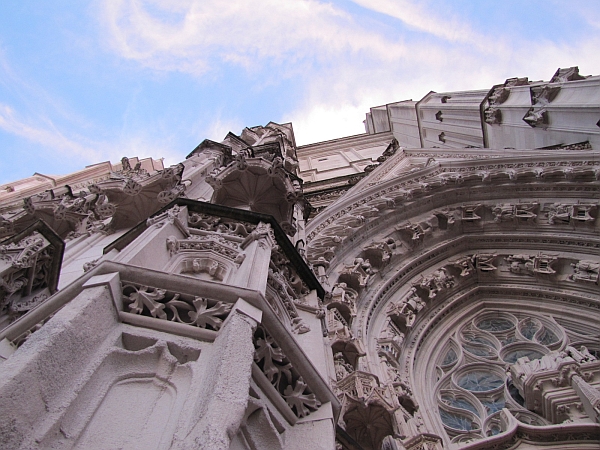
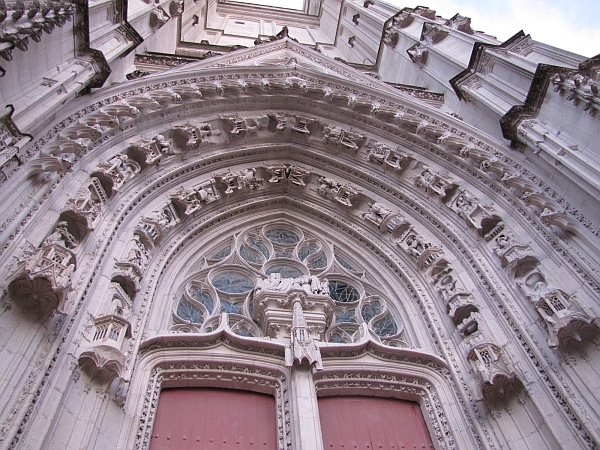
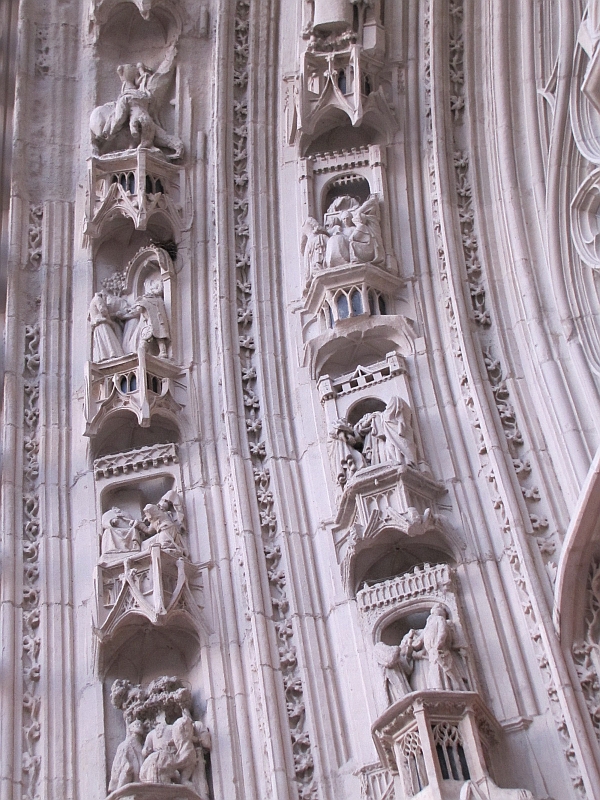
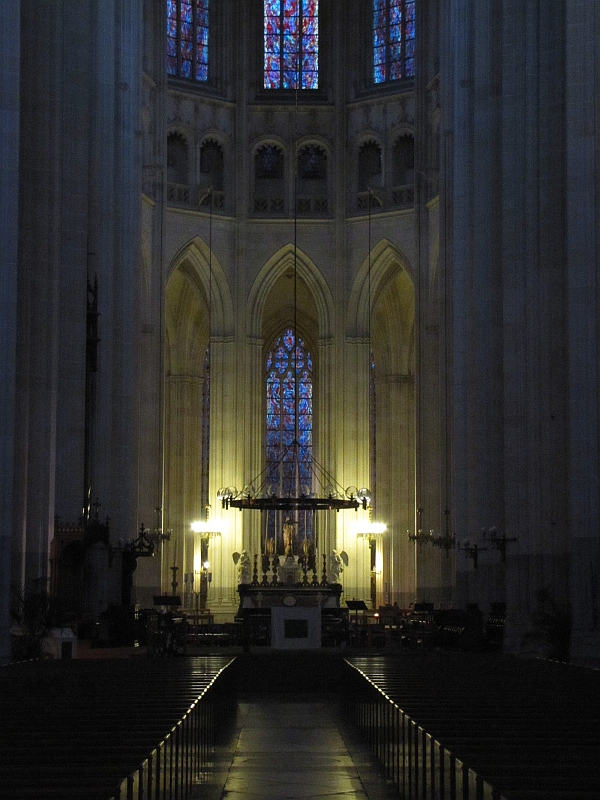
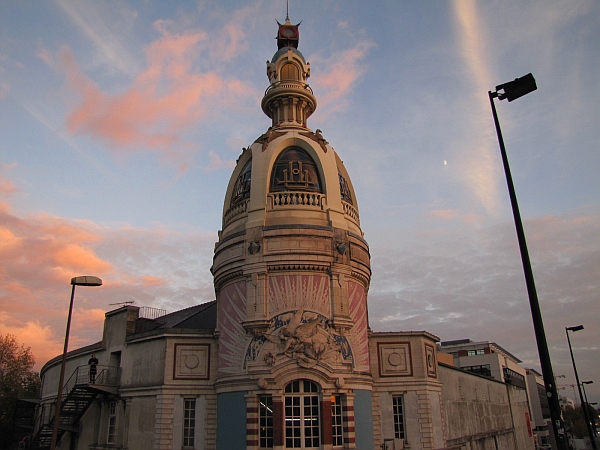








“How can we be capable of such feats even with medieval technology, and yet so utterly unable to grasp consequences that await us in mere decades? How can the same mindset that built this also be responsible for the wholesale rejection of facts ranging from evolution to climate change?”
It’s god, Dr. Watts.
Or the idea of an eternal, unchanging god, anyhow: they built them for the glory of an eternal god who promised them eternal life in exchange. If god (or those interpreting the facts for him/her/the spaghettimonster) were promising eternal life for stopping climate change and believing in evolution, you’d find it a lot easier sell, I think.
Of course some people might take issue with a belief in a god who encourages rational discussion, but I don’t think the two (belief in god and rationality, that is) are necessarily mutually exclusive.
Just commonly.
We now return you to the regularly scheduled lurking…
Les Machines de l’île. Oh freakin’ WOW!
Catholic Church is made up of humans, but it’s not human…
In many ways they resemble a corporation. They are in a different business, though no less amoral*, it’s a very, very long lived hierarchical institution that also has and had lots of temporal power and wealth…
*from our POV
Wow…some amazing shots, my friend! Definitely somewhere I’ll have to put on the list to check out at some point. Glad you had an excellent time.
i suspect one issue is that for a certain part of the world, conspicuous consumption have become a religion. A religion fed by the priests of economy and their marketing departments. Ever since the 1800s they have thought that the economies of the world need to grow by 3% or more each year, or the world will collapse. Perhaps the capitalist world will collapse, but i find it unlikely that the physical world will do so. Our only problem is that we can not provide a clear picture of what alternatives there are, and one attempt at creating an alternative grew cancerous. I wonder tho if it did so because it was not left alone to figure itself out, and ended up eating itself in an attempt to defend against, perhaps imaginary, outside threat. In the end we humans fear the unknown and trust the familiar, and that is what is keeping all kinds of rituals, organized or not, in use.
Dibs on the terrapin!
1. The Verne-ian mechanical monsters are wonderful. My husband asks if they have dinosaurs, too.
2. In re: how can we build cathedrals over centuries then but be so short-sighted now – conspicuous consumption, the church as corporation, the promise of eternal life. I would like to suggest multiple factors, including another: individualism. It’s the down side of the philosophy that you feel your life and your needs are at the same level of importance as the group or your neighbors.
Middle ages, you were a cog in a definite layer-cake of caste, with set responsibilities and perks, and you were born and died there. The entire universe you could see modeled everyone working together within and for that “universe.” It would be harder to conceptualize refusing to work on the cathedral, for instance, if your ancestors were masons, your granddad and pa had done stonework on a project that brought God’s approval down on your village, when you just didn’t see any real change generation-to-generation in your world.
Seeing so much change in the last century gives people the creeping suspicion that big things can and naturally do or should change. Add rugged individualism to that mix, and you’re required to be individual, to work for yourself and not some larger long-range institution. New is better. It’s harder to get everyone pulling in the same direction.
IMHO.
I’m not arguing against individualism, per se, I’m saying there are trade-offs?
Can I point out that one reason cathedrals took so long to build was economics? Skilled stonemasons are expensive and take a lot of training, and, even with Vatican backing, only so many skilled workers are available at any price. Not to mention supply chain nightmares. These enormous vanity projects–including their secular equivalents: castles, palaces, pretty government buildings–were the public works projects of their time, and there was no real hurry to finish them. Quite the contrary. Once the project was finished, the nobs would have to find something else for the workers to do before they got restless and started organizing.
Flanders makes a good point about cathedrals as giant public works projects.
They should start building wonders again. I can imagine it being tremedously morally uplisting to work on something so beautiful. Even if it is backbreaking work!
No doubt it would also make people want to protect and understand them, could be useful as educational and ‘cementing’ tool, I would think.
In thenMars Trilogy
… Continued damn iphone typing!
In mars trilogy by kim stanley robinson there was a lot of interesting debate on public works as defining culture and converging effort (like terraforming and stewartship) in future i think.
Also sir, you could just make a youtube channel and upload and embed you movies there, super eaay
Also note that just because something took four hundred years to build does not mean that people were actually working on it that whole time. People take time off for wars, harsh winters, hot summers, farming, plagues, etc.
Medieval Europe suffered under a chronic labor shortage, and the same people who were building the cathedrals also typically had crops to get in. In fact, the long construction time of these edifices speaks not really to a superior, ultra-long-term plan but rather long chains of planning failures that led to the project taking much longer than it really should have.
Folks said very insightful things about cathedrals here. Mod up for medieval history.
I am also direly envious of your visits to large automata, but that’s hardly news.
( :
You all think individualism killed the mega-project? And does that spell doom for tackling climate change?
OK, I have to go there now!
Really liking the Anglerfish video!
Peter revealed: “Took me all damn morning to post this.”
But it was oh so worth it…
“How can the same mindset that built this also be responsible for the wholesale rejection of facts ranging from evolution to climate change?”
The wholesale rejection of evolution and anthropogenic global warming seems to me to be local to the USA (and even there polls show that most of the time, most people know about AGW). Even the catholic church officially accepts evolution.
What’s worrying is that people are capable of washing away the feeling of discomfort in the face of impeding doom with, well, another cookie. So they don’t have to do anything right now, perhaps later, but of course, somebody has to do something about it, no?
Those are some incredible photographs and very cool subjects. Nifty.
Peter Watts wrote, in-part:
[ … ]
This edifice was built over four and a half centuries, starting in the fourteen hundreds. It wasn’t completed until 1891. Kinda puts a new light on the whole short-sighted-species line, don’t it?
I find this both amazing and disheartening. How can we be capable of such feats even with medieval technology, and yet so utterly unable to grasp consequences that await us in mere decades? […]
It might be the case that Institutions, more than people, are able to contemplate projects that span more an a few years. Indeed, people can’t work on projects for more than perhaps half of their lifetime, while institutions can make multi-generation plans and carry them out.
Yet as slow as individuals (even individuals en-masse such as a widespread environmentalist movement) can be to accept realities and change their own lives in such as way as to contribute to a perceived “greater good”, Institutions are necessarily much slower.
Yet a good institution might be able to effect caretaking missions over longer scales than can interest an individual, or group of individuals sharing common cause. For example, the US Environmental Protection Agency.
Then again, one can easily start lamenting the fact that such institutions tend to be bureaucratic in nature. Indeed, one of the few things that could prevent pretty significant “mission creep” due to changes in the nature of the bureaucracy or the leadership personalities, might be a shared ideology, and for most of history the only sort of ideology that could last long enough to complete a five-century project would be a religious ideology.
So, to whimsically retort to the question of ‘why can’t it be used for good instead of evil”, let’s suppose for the moment that the religion is a more laid-back and less-theological version of Wicca or some comparable “earth friendly religion”. Then you might have the US EPA religiously devoted to mostly ignoring bureaucratic infighting and mission-creep, and actually fixing the Chesapeake Bay.
i want one of these creatures!!! i’d ride it to work. Hell, to buy milk at the corner store. These are amazing….